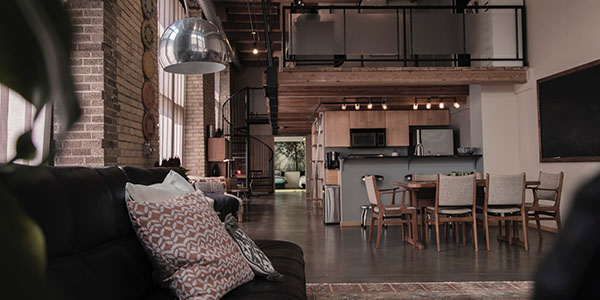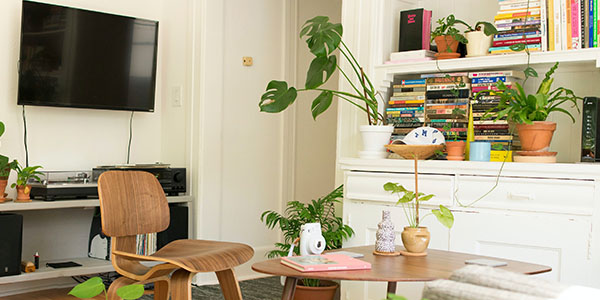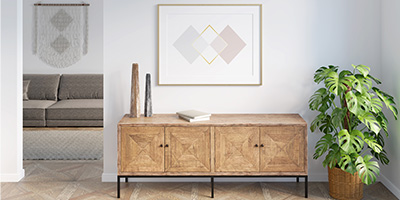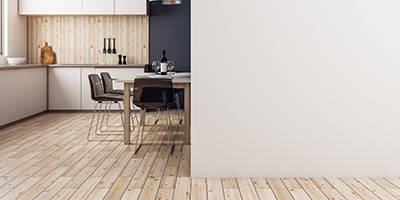Open Floor Plans vs. Closed Floor Plans

Open vs. Closed Floor Plans
Floor plans are an important part of any home renovation. They influence everything from construction costs to where you spend time in your home.
If you’re in the design phase, you’re probably weighing the benefits of open and closed floor plans. An open floor plan can open up your home and create a modern feel where each room flows into the next. In contrast, a closed floor plan has more of a traditional feel and produces private, specialized areas.
Not sure which design will work for you and your family? Use these lists of pros and cons to decide whether an open or closed floor plan fits your space.
What Is an Open Floor Plan?
Houses with open floor plans have one large room that forms a single living space. The most common example of this is a room that combines the kitchen, dining room and living room.

The Benefits of an Open Floor Plan
An open floor plan can:
- Make spaces appear larger – Especially good for smaller homes, open concept floor plans can make small areas feel much larger than they actually are. What might be a small space won’t feel restrictive with an open floor plan.
- Create space for plenty of furniture – With minimal walls, there is plenty of space for additional seating and few limits on how you can arrange it.
- Promote everyday living – With an open floor plan, family members can be in separate areas, say the kitchen and living room, and still interact with each other.
- Allow you to keep an eye on the kids – Parents can make sure their kids are safe and behaving while doing laundry or prepping dinner.
- Make room for guests – In a house with an open floor plan, you can easily host a large number of guests who can socialize without splitting up into different rooms.
- Spread natural sunlight – Fewer walls means even the center of your home can benefit from natural sunlight.
- Increase resale value – Open floor plans are very popular and having one can boost the value of your home when it comes time to sell.
Open floor plans come with a few negatives as well. Sound and smells travel easily without walls and doors to stop them. And larger spaces are harder to heat and cool, which could lead to higher energy bills. It’s important to consider these pros but also consider the type of space your family enjoys. If you’re looking for a cozy, quiet space, a closed floor plan might be right for you.
What Is a Closed Floor Plan?
Homes built before the 1990s were commonly designed with closed floor plans, usually with three-quarters of a wall separating main rooms. A closed layout makes homes more functional and separates them into distinct private areas.

The Benefits of a Closed Floor Plan
The advantages of a closed floor plan include:
- Private spaces – Occasionally you need time to yourself, and walls and doors are good for that.
- Sound control – Beyond personal privacy, doors allow you to limit the sound circulation in your home.
- Walls to decorate – Walls enable you to hang artwork and photos throughout your home.
- Specialty rooms – The more rooms, the more opportunity you have to create a specific purpose for each room.
- Contained messes – Children are less likely to spread their mess from room to room. Items are (hopefully) kept in one area of your house. This makes it easier to clean, or at least easier to hide the mess behind a closed door.
- Reduced heating/cooling costs – Since small spaces are easier to heat and cool than large ones, a closed floor plan saves you money on energy bills.
Additionally, a closed floor plan is a good option if you don’t need a lot of space for hosting or fully use all the existing rooms in your home. And even though open floor plans can bump your resale value, your renovation costs can easily balloon if you run into problems during the project. Instead of knocking down walls, you could always make your current floor plan feel more open by adding extra light or installing French doors.
Comparing Open Floor Plans vs. Closed Floor Plans
There’s a lot of things to consider when choosing a floor plan. The key is to make the best use of available space for how you live. If you know you aren’t using a secluded room enough, it might be time to open it up. If you live in a large house with plenty of room as it is, knocking down your walls might not be worth the effort. Our best advice is to take the time to think about how you can best use your home and the space it provides.
Review the pros and cons, and then ask yourself a few questions:
Question | Answer |
|---|---|
Do you host a lot of events? | An open floor plan would be great for you. |
Do you spend a lot of time in the kitchen? | An open floor plan can let you socialize while you cook. |
Do you prefer small, quiet spaces? | A closed floor plan is probably your best bet. |
Do you hang a lot of art on your walls? | A closed floor plan will provide the walls you need for decorating. |
Do you prefer a modern look or are you more traditional? | An open floor plan will help you achieve a modern look, while a closed floor plan will maintain a traditional look. |
Is your home loud? | An open floor plan can exaggerate noises, whereas a closed floor plan allows you to keep the sound in one area. |
Not sure where to start when it comes to remodeling your home? Check out our Complete Home Renovation Guide!


